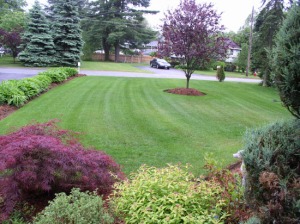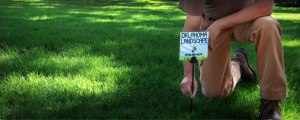After Tulsa's wintery weather this past month, it might be hard to think past the cold, but believe it or not, it's never too early to start planning ahead. With these simple lawn fertilization tips, your grass can get a head start on looking great sooner and staying lush and green longer! Good fertilization builds a healthy foundation from which your lawn will grow and also protects agains stressful conditions later in the hot Tulsa summer.
Test Your Soil's pH
Depending on what kind of grass you have, it's typically time to start fertilizing your lawn once soil temperatures start reaching 60 degrees. Fertilization isn't a one-size-fits-all practice but is intended to correct and optimize the chemical and nutrient conditions that are unique to your soil. Start by having your soil’s pH tested to see what nutrients might be lacking.
Even the best-kept lawns have now spent the past few months under the strain of a cold winter. Testing your soil's pH will tell you how to provide good nutrition to get back up and running this spring. You may need to replenish nitrogen, phosphorus, or potassium in order to build strong roots and turf.
Prepare for Spring Fertilization with Lawn Aeration
You will also want to prepare your lawn by aerating. This helps remove thatch or dead grass and breaks up compacted soil to ensure that the nutrients can penetrate deep into the earth. Aeration also helps achieve better drainage and makes more room for oxygen—it's all about building the strong and healthy root system your lawn needs to thrive. While you're at it, you might consider overseeding to help fill in any gaps in grass coverage left after the winter.
Combine Fertilization with Pre-emergent Weed Control
Springtime isn't just about fertilization. Remember that the same nutrients that kick start your grass are also favorable for other organics hiding in your lawn, even weeds! Get ahead of the curve by utilizing pre-emergent weed control to prevent these troublesome plants from establishing themselves. There are even some weed control and fertilizer combos, including some organic options like corn gluten meal. These convenient solutions can both strengthen your grass and kill weeds at the same time.
Protect Your Work with Good Mowing Techniques
When it is time to start mowing, don't forget to start out with a higher blade height around three inches, cutting no more that a third of the grass blade at a time. This will help reduce strain on your lawn in this crucial time of growth and replenishment, keeping the soil cool and preventing weed seeds from getting sunlight. Make sure you do not over-stress the grass by scalping the lawn with an overly short blade height.
Make a Lawn Fertilization Schedule
When your done, it's time to sit back and watch your grass grow! We advise fertilizing your lawn again six to eight weeks after this initial treatment, so keep a fertilization schedule to know what's up next and don't hesitate to contact our Tulsa Lawn care specialists. You're well on your way to a vibrant and beautiful Tulsa lawn this spring!








